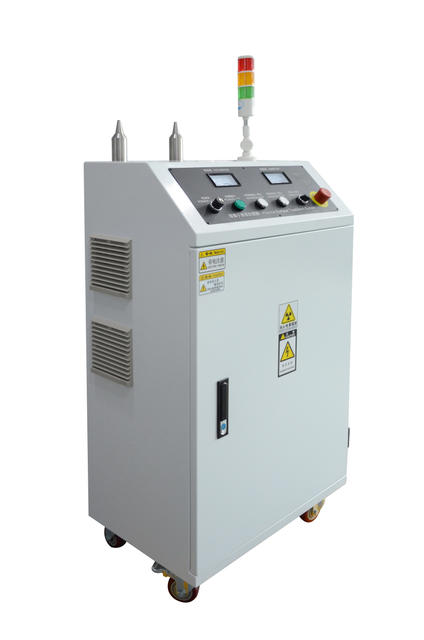- All
- Product Name
- Product Keyword
- Product Model
- Product Summary
- Product Description
- Multi Field Search
Views: 389 Author: Site Editor Publish Time: 2021-04-09 Origin: Site
If many low-end materials have poor adhesion and low processing requirements, they are likely to be treated with flame. Although this method is primitive, it is effective. But not all materials can be treated with flames. Many materials are not resistant to high temperatures. Burning with fire will burn the materials. For example, in the semiconductor industry and electronics industry, many accessories need to be surface treated. This is the case. Use plasma surface treatment equipment for treatment.
The principle of plasma surface treatment is an ionized gas created by gas pressure charging and discharging. High frequency and high voltage are used on the charging and discharging electrodes, causing a lot of plasma gas to directly or indirectly interact with the molecular structure of the surface. The chain creates carbonylation and nitrogen optically active official groups, which makes the object's interfacial tension continue to rise, the surface is coarsened to remove oil, and the synergistic effect of the surface layer such as water vapor improves the surface performance and achieves the purpose of surface preparation. It has the advantages of short production and processing time, fast production and processing speed, and simple actual operation. It is widely used in product packaging, printing, composite, and pre-bonding.
Flame treatment refers to the use of a certain proportion of mixed gas to ignite at a unique top end, so that the flame directly touches the surface of objects such as polyolefin. It is used to solve large-area high polymers, no need to solve the inclusion on the back, no pinholes, no ozone substances, and excellent anti-aging properties.
However, for the complex appearance of plastic products, the actual effect is not very good, and the production and processing time is long, and the cost is increased. It is difficult to obtain the parameters of the product to be processed when the plastic surface is irradiated by ultraviolet rays. The key elements that harm the flame to solve the actual problem are the lamp type, temperature, processing time, gas proportion and other elements. Because the process is strict in the processing method, a slight carelessness in the operation process will cause the substrate to deform and burn the product. Therefore, it is currently used in the surface treatment of polyolefin products.

The principle of a corona machine is similar to that of flame treatment, except that the processing method is different. The corona machine processes sheet materials, such as cell phone glass covers, and also processes thin films, such as various thin films and metal films. In general, the corona machine can only handle very thin things, because its discharge height is limited, usually less than 5mm. If the material is too thick or the surface is irregular, it will take a long time to use a plasma cleaner for surface treatment.
Plasma is divided into vacuum plasma and atmospheric plasma. The vacuum power is a plasma processor with a vacuum chamber, which can perform a full range of cleaning treatments on various shapes and materials, and it is also convenient to adjust process parameters. It is the mainstream on the market. .
There is also an atmospheric pressure plasma cleaning machine, which is what everyone usually says. The advantage is that the cost is relatively low, it can clean many materials with flat surfaces, and it is easy to customize into various styles, but compared with vacuum cleaning machines , It is not so easy to control the parameters, and only one or both sides can be cleaned, and there is no way to deal with irregular materials.
After plasma treatment, the surface of the material will have two changes:
Physical change: After plasma bombardment, the surface of the material will become very rough. Of course, this roughness is invisible to the eyes, usually only a few tens of nanometers in depth. However, after plasma surface treatment, the hydrophilicity of the surface of the material will be significantly increased, which can significantly improve the bonding ability of the surface of the material.
Chemical change: The surface molecular structure of the product is stimulated by ion beams, which breaks the molecular chain and makes it into a free state, so that the kneading force is strengthened in the aspects of printing and coding. In addition, if it is a metal material, such as a copper lead frame, which contains oxides on the surface, hydrogen gas can also be used for oxide reduction treatment.
Fire is purely to use high temperature to destroy the surface structure of the material, and even to melt the surface of the material and become rougher, thereby improving the bonding ability. Plasma destroys the molecular structure of the product surface in a microscopic manner, which is completely invisible to the naked eye. Plasma is microscopic processing. After processing, it is invisible to the naked eye. It is usually detected with an instrument, such as a water drop angle or a dyne pen.

Home / Products / Solution / Service / Media / About KeQi / Contact us